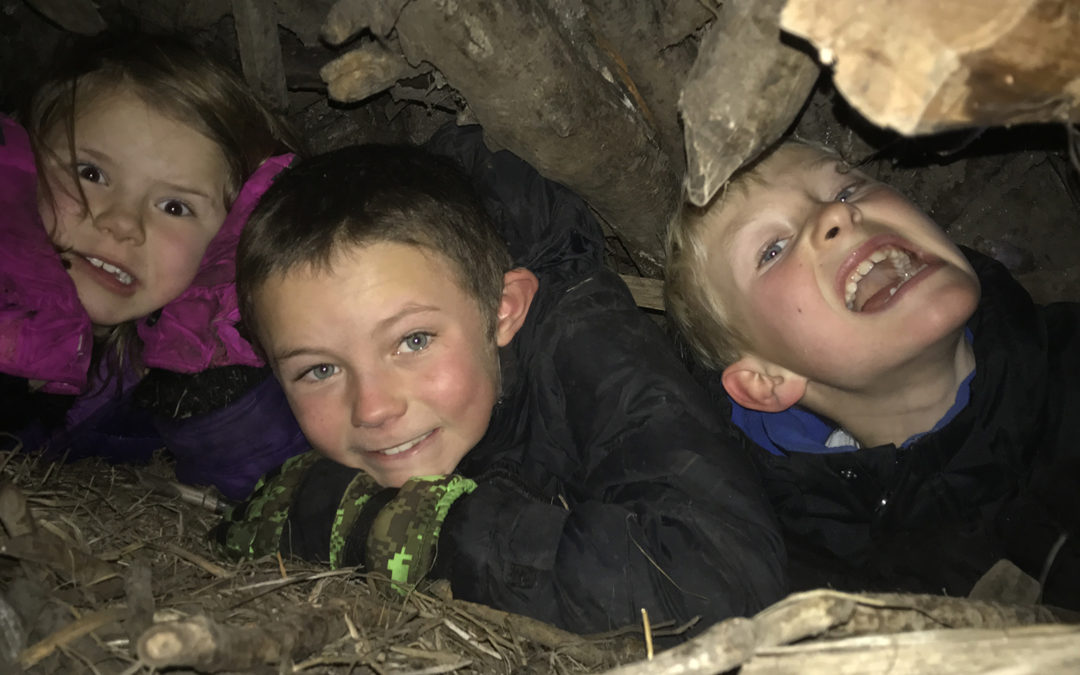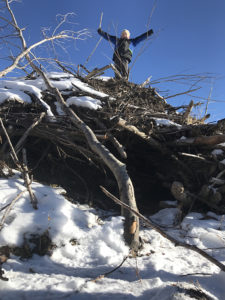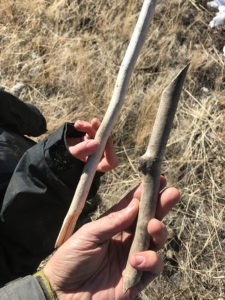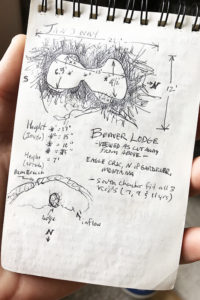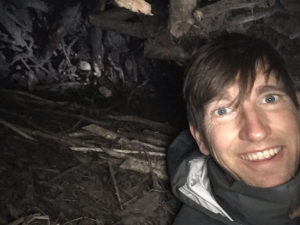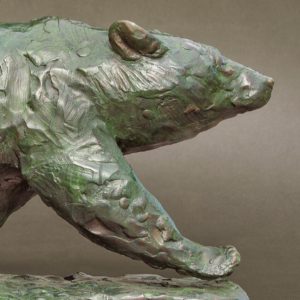The iPad has taken complete control of my fun-loving ‘nature kid’. Sitting in a pile on the floor, swaddled in a red and green plaid blanket beside the space heater, my 9-year old has been seized by the device, and it isn’t letting go. Surely, all the children living at the doorstep of the world’s first national park get a daily dose of the most intimate, wilderness adventuring, right?
Unfortunately, whether rural or urban, electronics universally blot out time otherwise spent running feral, climbing trees, and scaling peaks. So, in order to, as Muir put it, “climb the mountains and get their good tidings,” i.e., for our young ones to enjoy lower stress levels, elevated creativity, stronger immune systems, heightened judgment, more fit bodies, and kinder, more empathetic hearts, a crucial, parental role must be fulfilled. We parents need to make sure time is well spent, and unplugging from technology and getting outside is one of the best ways to do so. Sometimes it’s easier said than done.
“Come on,” I say to George, “we’re gonna go outside.”
“I’m almost done with this episode, but I wanna watch one more of my shows,” he replies.
“No,” I continue, putting on my best ‘dad voice’. “We need to go outside.”
“Why,” he snaps back, like Tolkien’s Gollum clutching his ‘precious’.
“Because, you need to be healthy and you can’t be healthy without going outside,” I counter.
“Hummpf,” is his exasperated, but to my relief, conciliatory response. It worked! Pfeeew…
Now for the real challenge; how to make this outing enjoyable enough that he will want to do this sort of thing instead. Just days before, a friend and I had found an abandoned beaver den not far from our home. The dam had somehow crumbled, leaving the entire complex high and dry. Never before had I had seen a fully winterized beaver lodge so exposed and ripe for exploration. It was too good to pass up.
“Where are we going?” George asks with the temerity of a teenager, as we get in the car.
“You’ll see.”
Only a minute from home, and moments after parking, we are heading off down the trail. I happily watch my boy come back to life with every step. The hard part, as always, is getting out the door; the rest takes care of itself. We tromp, boot-step by boot-step through ever-deepening layers of white. I take care to shorten my stride, thinking back to outings with my own father many winters ago and the challenge of following in his large, distant footsteps. George utters a few obligatory, “where are we going’s, and “are we there yet’s”, but this is all okay because the stage is set and it’s about to get really, really good.
“There it is” I say! We are at the lower edge of the defunct pond and the snow is knee deep on my legs and almost to George’s waist.
“There’s what?” he mumbles.
“It’s the lodge, the beaver lodge, the one from the other day! I couldn’t find the entrance—the place where the beavers would go in and out—I need you to help me find it!” I deliberately inserted this call to action; it was an invitation worth extending.
The beavers themselves are gone, and with it, any risk of getting chomped in the butt by North America’s largest rodent. If the hut had still been occupied, the dam would be in good repair and the entrance would be under 4-5′ of water and ice. Today, it is feels like standing in the bottom of a broad, empty swimming pool. My suspicion is that the beavers had just run out of food and decamped further downstream; to a location with more tasty willow, alder and aspen trees. Regardless, I was overjoyed to have a look inside a fully winterized lodge and to see what George would make of it. Most beaver houses come with a timber framed interior and thickly mudded walls. The beavers, in all their wisdom, abstain from plastering all the way to the apex in order to maintain proper ventilation. You can tell if a lodge is occupied in the depths of a frigid winter by the wisp of smoke (steam) rising out of this ventilation chimney. One clue to the fate of this particular colony is that there is no food cache at the den entrance. Starting in autumn, and recognizing that fresh greens will soon be gone, the industrious rodents begin cutting woody stems and storing them around their underwater welcome mat. Once the pond freezes, this food store is safely locked inside the icy vault with its creators. To partake of their ‘canned goods,’ a beaver need only take a deep breath, dive in, and retrieve some choice cuttings for consumption back inside: The nutritious bark on these sticks is what they’re after, rather than the woody part of the stick itself. And from the looks of it, the colony went through all the motions of prepping the house for the cold season, but upon finding a dearth of grub said, “to heck with it.” Later, in the absence of the dam engineers, the rampart of wood and earth sprung a leak. A weeping hole soon became a drip, then a trickle, and before long, a gushing torrent that knifed its way all the way down to ground level. As I survey the damage, piecing together the story behind the beavers’ exodus, a voice breaks into my consciousness.
“I found it, I found it, come’meer dad! Come here! Quick, come’meer!” George had made the big discovery of the day—the beavers’ portal into sanctum sanctorum.
“I knew you would find it,” I said, handing him my flashlight.
“Check it out,” I say, feeding off of his excitement. I insist that he go inside.
Before I know it, the lithe boy in the blue coat and jeans is wriggling his way up into the belly of the beavers’ lair. His voice grows muffled as his legs and feet disappear from sight. At that point, the only thing left for me to do is, well, follow him! Wiping away loose snow from the entrance, I do my best army-crawl to catch up. The access tunnel is a little bit tight, but I manage. Once inside we find a spacious interior composed of two chambers arranged in a dumbbell configuration. The pairing of these somewhat circular rooms is connected by a bottleneck that is about 2 feet wide and 13″ high; just big enough for a boy to sneak through and leave his father behind. I imagine how many beaver kits must have done this exact same thing during the heyday of the colony. If there is any doubt about whether the kiddo is having a good time or not, the timbre of George’s voice is all I need to hear—this is FUN!
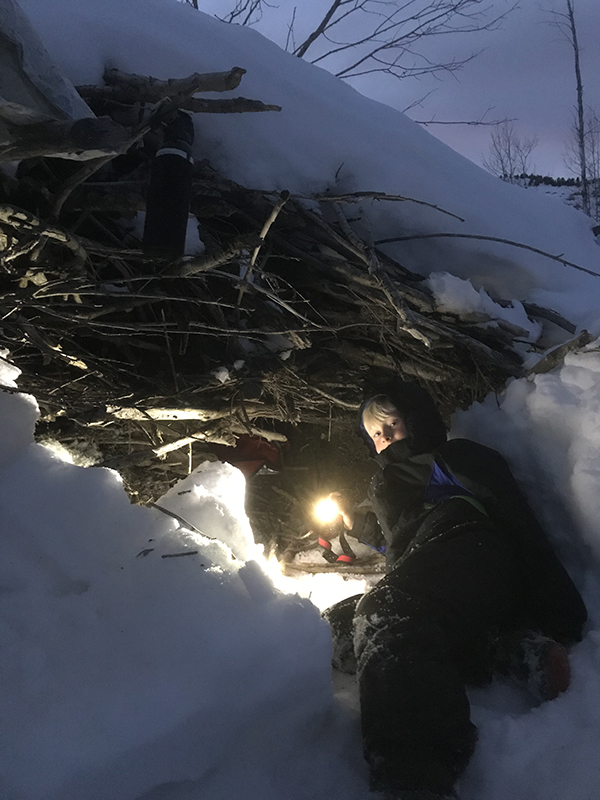
A hearty little explorer on the verge of bunking with beavers for the night.
“There’s another entrance!” he yells, through muffled tones and the flickering beam of a flashlight. Beyond admiring the quality of the construction, we measure the specs on the ‘spread’ with a tape measure. The outside dimensions (13×20 feet across) host an impressive interior span of 13 feet from end to end. One room is 4.5 feet wide and 15 inches tall and the other, 6.5 feet across and 17 inches high. Interestingly, the ceilings are not a jagged mess of protruding sticks as one might expect, rather, they are a finely manicured surface of gnawed stick ends and mud. What sticks must have been protruding down into the living space at some point were neatly trimmed off, creating a tastefully ornate, tooth-mark texture across the shallow vault. The floors are mostly flat, tidy, and littered with short, peeled twigs. The discarded stems are beautiful things to behold in their own right; George and I each agree to take only one apiece as a souvenir of the experience. Then it dawns on us— we are the first humans to grace this hallowed spot where only beavers have trodden before. THIS IS SO NEAT!
From somewhere inside this stick n’ mud whale, my little Jonah exclaims, “Dad! This is the coolest fort EVER!”. “We need to bring [my friends] Garrett and Avery up here!”
“I know,” I say and pause for full effect:
“Now do you see why it’s good to get outside?”
“Yeah, I know,” he says matter of factly, as if this is plainly obvious to all but the most densest of adults.
Opportunities like this to get ourselves and our children off of devices and into nature are much closer than we realize. While unplugging from technology sometimes seems difficult, a little bit of openness to new experiences and a touch of creativity can bring the next stretch of unplugged, together-time (in your own back yard, creek, town park, abandoned lot, or city beach) within reach. Though a beaver lodge is cool, it’s certainly not necessary; almost anything can be adventurous and riveting when viewed through the eyes of a child—even if we have to give them a little nudge to start…
Days later, and after taking George’s friends up to share in the “super-secret fort” experience, we upped the ante one final bit—we tried for a sleepover inside the beavers’ den. I give George credit for agreeing to go along with dad’s nutty plan, but alas, the accommodations were a bit too tight, the temps a smidgen too chilly, and so, we lasted but a half-hour. Though final bits of the adventure were shorter than planned, the overall experience was priceless—it was memory-making at its best. Our consolation from the sleepover attempt was a moonlit walk back home. The stroll found us joking, telling stories, making confessions about castor-induced claustrophobia, and just reveling in each others company. With boots crunching over ice and snow, we were unplugged and fully connected to one another. Oh, and one last thing: We tried to make a “goodnight phone mommy” from inside the beaver’s the lodge, and should you be curious, beaver abodes get really crummy cell service! How funny is that? Apparently beavers don’t like their kids to be on devices either.
For more about our adventures as a family, see Family Backpacking and Fishing the Beartooths and Time Flies: Flyfishing Through Generations.

